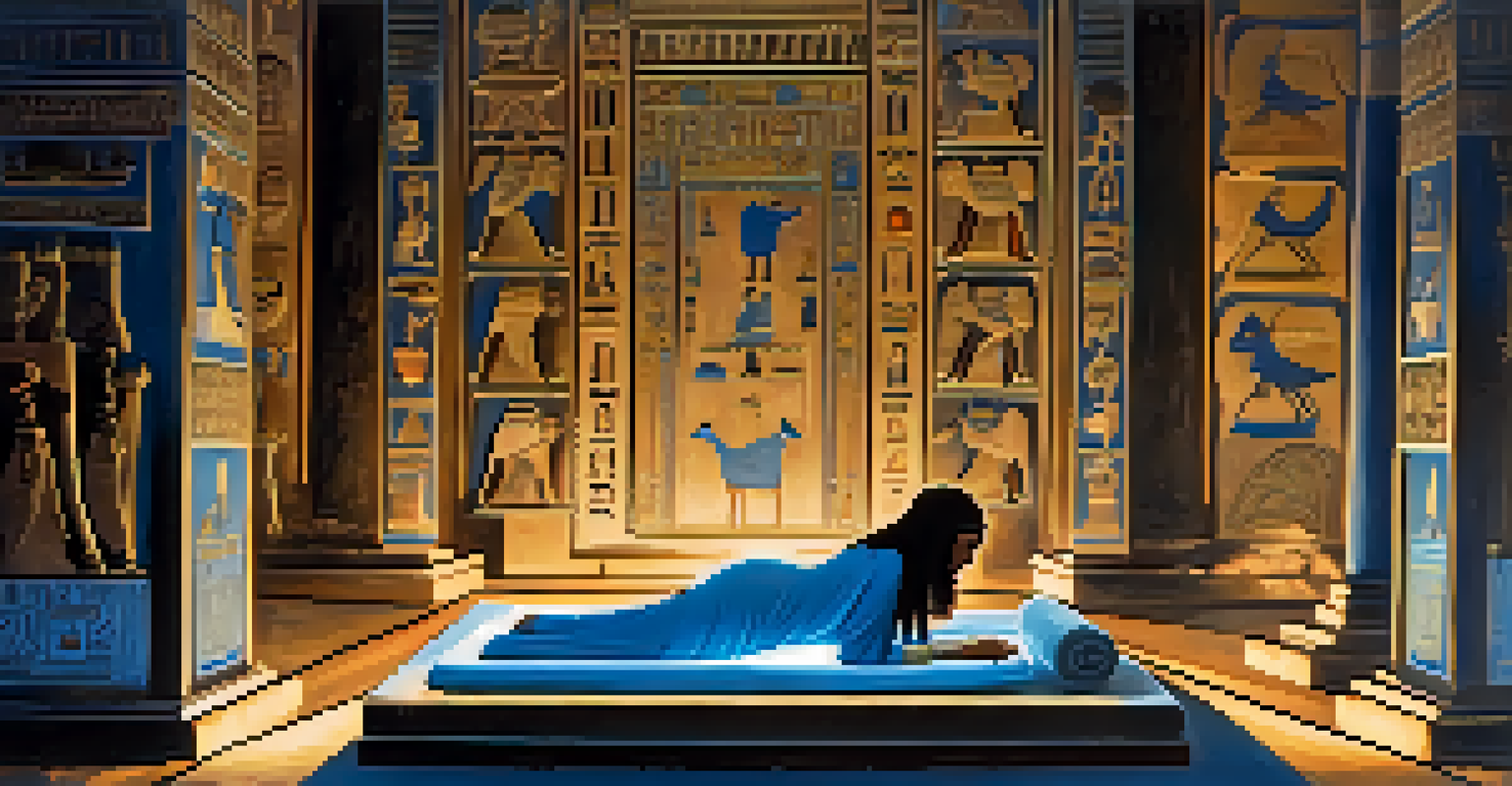Exploring the Historical Use of Hallucinogens in Medicine

Understanding Hallucinogens: A Brief Overview
Hallucinogens are substances that alter perception, mood, and various cognitive processes. These compounds can be derived from plants, fungi, or synthesized in labs, and they have been used for centuries across many cultures. Examples include psilocybin from mushrooms and mescaline from cacti, both of which have rich histories in traditional medicine and spiritual practices.
The use of hallucinogens as a therapeutic tool is not a new idea; it has roots in ancient traditions and practices that recognized their potential for healing.
Historically, these substances weren't simply recreational; they played vital roles in rituals and healing. Indigenous cultures utilized hallucinogens to connect with the spiritual world, seeking guidance and insight. This sacred use laid the groundwork for understanding how these substances might influence mental and emotional health.
In modern times, there's been a resurgence of interest in hallucinogens, particularly for treating mental health conditions. Research is uncovering their potential therapeutic benefits, from alleviating anxiety to enhancing well-being in terminal illnesses. Thus, the journey of hallucinogens in medicine is both ancient and contemporary.
Ancient Civilizations and Hallucinogenic Practices
From the ancient Egyptians to the Aztecs, various civilizations have incorporated hallucinogens into their medicinal and spiritual practices. For instance, the use of peyote by Native American tribes showcases how these substances were believed to facilitate healing and communication with the divine. Rituals often involved consuming these plants in a controlled, sacred environment.

The Egyptians used substances like blue lotus for its psychoactive properties, integrating them into their medicinal texts. This highlights how hallucinogens were not just recreational tools but integral to health and spirituality. Such practices indicate a deep understanding of the human psyche, even without modern scientific insight.
Ancient Use of Hallucinogens
Hallucinogens have been integral to various cultures for medicinal and spiritual practices, illustrating their historical significance.
These historical practices reflect a collective wisdom that recognized the potential benefits of hallucinogens. As we explore their use in medicine today, we can appreciate how these ancient traditions laid the foundation for contemporary research and applications.
The Role of Hallucinogens in Traditional Healing
In many cultures, shamans and traditional healers have utilized hallucinogens as part of their healing arts. These practitioners often guided patients through hallucinogenic experiences to confront personal issues or traumas. The therapeutic aspect lies in the altered state of consciousness, which can lead to profound insights and emotional release.
Psychedelics are not a panacea, but they may help us understand the mind and treat mental illness in ways we never thought possible.
For example, ayahuasca, a brew from the Amazon, has been used for centuries to treat various ailments. Participants often report life-changing experiences that lead to improved mental health. The communal aspect of these ceremonies also fosters a sense of belonging and support, enhancing the healing process.
Such traditional practices emphasize the importance of context and intention when using hallucinogens. The structured environment of these ceremonies contrasts sharply with recreational use, highlighting the potential for therapeutic outcomes when approached with care and respect.
The 20th Century: A Shift in Perception
The early to mid-20th century marked a pivotal moment for hallucinogens, as they began to attract scientific interest. Researchers like Dr. Albert Hofmann, who discovered LSD, opened doors to understanding the mind's complexities. Initial studies suggested that these substances could be valuable in treating mental disorders, leading to a flurry of research.
However, the counterculture movement of the 1960s shifted public perception dramatically. Hallucinogens became synonymous with rebellion and hedonism, leading to widespread legal restrictions. This stigmatization overshadowed the potential medical benefits that had been previously explored, halting research for decades.
Renaissance in Hallucinogen Research
Modern studies are uncovering the therapeutic potential of hallucinogens for mental health conditions like PTSD and depression.
The 20th century thus represents a dual narrative: one of discovery and potential, and another of fear and regulation. Understanding this history is crucial as we navigate the current renaissance in psychedelic research, seeking to reclaim the therapeutic potential of these substances.
Modern Research and Therapeutic Applications
Today, we are witnessing a renaissance in the study of hallucinogens, with numerous clinical trials underway. Researchers are investigating their effectiveness for conditions like PTSD, depression, and addiction. Early results indicate that substances like psilocybin and MDMA can lead to significant improvements in patients' mental health.
This renewed interest has prompted a reevaluation of existing regulations and societal attitudes toward hallucinogens. As more studies validate their therapeutic benefits, there's a growing push for integrating these substances into conventional treatment protocols. It's a fascinating time for mental health, as science and tradition converge.
The potential for hallucinogens to transform therapy is exciting, but it also comes with responsibility. Ensuring safe and ethical practices in clinical settings is paramount as we explore these ancient medicines in a modern context.
Challenges and Controversies in Hallucinogen Research
Despite the promising research, the journey of hallucinogens in medicine is not without challenges. Stigma surrounding these substances persists, often hindering funding and support for studies. Many still associate hallucinogens with illicit drug use rather than potential medical breakthroughs.
Additionally, the legal landscape remains complex, with many hallucinogens classified as Schedule I substances. This classification suggests they have a high potential for abuse and no accepted medical use, making research difficult. Advocates argue for reclassification to facilitate further study and integration into treatment options.
Challenges Facing Hallucinogen Research
Stigma and legal restrictions continue to hinder research on hallucinogens, complicating their integration into mainstream medicine.
Navigating these challenges requires a balance of scientific rigor and public education. By fostering open dialogue about the benefits and risks of hallucinogens, we can help reshape societal perceptions and pave the way for their rightful place in medicine.
The Future of Hallucinogens in Medicine
Looking ahead, the future of hallucinogens in medicine is filled with potential. As research progresses, we may see these substances incorporated into mainstream therapeutic practices. The prospect of personalized treatment plans utilizing hallucinogens presents an exciting frontier in mental health care.
Moreover, ongoing studies are likely to explore the mechanisms behind how hallucinogens affect the brain. Understanding these processes will not only enhance our knowledge of these substances but could also lead to the development of new medications that mimic their effects without the hallucinogenic experience.

Ultimately, the journey of hallucinogens from ancient rituals to modern medicine underscores a deep and evolving relationship with these powerful substances. As we embrace this journey, it’s essential to approach it with respect, curiosity, and a commitment to ethical practices.